Popular on Food52
61 Comments
Mike S.
January 5, 2020
All good but growing up in 70 & 80's toast in upright toaster NEVER went soggy after butter or marg must be all the crap in either or both that industry has added
Cali R.
April 7, 2019
I pre butter with room temperature butter so it spreads evenly over the toast from coast-to-coast and put the oven on broil. It's the absolute best!
Linda
June 13, 2018
During power black outs, nothing tastes as comforting as browning, sizzling buttered toast in a cast iron skillet on top of your wood stove, while cracking a few eggs to sizzle with them - just like breakfast at Grandmother's house. And of course, coffee made in a percolator!
Jim L.
April 28, 2018
Butter bread and toast in a skillet like you would do making grilled cheese sandwiches
Yvonne D.
April 26, 2018
This reminds me of the “toasted biscuits” I had growing up. We’d take day-old biscuits, split in half, butter them first, and toast in the oven. I LOVE butter puddles. Warm and nutty flavored. Day-old toasted was better than fresh out of the oven!
Andrew P.
March 26, 2018
Im a post-toast buttered. But it should be noted that cold butter is the worst for bread regardless of wether it's done pre or post toasting. Room temperature butter spreads without damaging or squishing the bread and melts very quickly on hot toast.
Joyce K.
March 13, 2018
I set my toaster oven on Broil, and place a quartered pre-buttered bagel in there and toast until golden. It DOES make a difference.
Jade E.
March 3, 2018
We didn’t have a toaster growing up. I thought this is how everyone made toast, until collegeI think.
Janet M.
December 23, 2017
I've done it both ways--in the oven when fixing toast for a crowd, or in the toaster when it's just for me or the two of us. There is no doubt about the oven toast deliciousness, but it does take longer. It is the only way, however, to make cinnamon toast!
Marie N.
September 26, 2017
My mom always made toast pre-buttered & I loved it. I didn't know there was any other way to make it until I left home. Hers had the 5 pats like one in the article. By the way, you don't have to leave the toast until those 'bridges' have almost burned. Watch it more closely & remove the toast from your oven or toaster-oven before it gets too dark, seems like common sense to me. Another thing is that if the pats are too thick you'll have greasy, wet toast which isn't pleasant to eat. I prefer to use room temperature butter dotted on all over with smaller 'bridges' but, they are definitely important. You can spread the butter all over but go lightly so that the butter will brown some, otherwise the toast will be wet & greasy with this technique as well. Pre-buttered does require a bit more effort but it is so worth it.
Kim
July 27, 2017
I pre-butter, but I don't toast it, I griddle it. Very low flame, and invert a stainless bowl over it as a makeshift oven. A lot of trouble? Maybe...but it's pretty good 😊
sandal
July 27, 2017
These are different foods for different occasions, not a better or worse scenario. Butter after for decadent, buttery goodness since the butter is intensely concentrated on top, butter first for maximum absorption and perfectly crisp top crumbs, butter first and fried in a cast iron pan for uniformity and crunch.
And no cold butter, ever. That ruins everything.
And no cold butter, ever. That ruins everything.
Gabriela G.
July 27, 2017
I've always prebuttered my toast and have probably shortened the life of a few toasters as well. (Just stand nearby in case there's smoke ;-).)And, if you have the counter space for one, invest on a toaster over. That is THE BEST tasting toast of all.
Hilary
July 27, 2017
My stepfather always did it this way for us...the best tool for the job is the toaster oven.
Terry
July 3, 2017
No toaster, huh? This might be a use for my antique Glenwood's vertical broiler, as drips were anticipated in the design. Have to wait 'till we're in our next house to try it out, but thanks for the idea!
Bholshouser
August 7, 2016
Pre-butter but always melt the butter and spread with a pastry brush so that every bit of bread is covered. I'm not a fan of the burned bridges. ;)
Lesley P.
August 6, 2016
Since I never ever have butter in the refrigerator pre-buttering id never a problem .You can slather as much on as you want.Thick sliced,heartier breads like French come out dreamy.
Donna H.
August 6, 2016
I dunno, this looks like burned toast to me, not very appealing. I get the more butter idea though, I'm all for that! Just no burned stuff please
Penny H.
August 6, 2016
When I was a newlywed in 1957, my husband wanted me to melt butter and lightly butter his toast after toasting - extra work and a pan to wash. Instead, I would lightly toast the bread, rub it all over with a stick of butter, then put the bread back in the toaster and re-toast if it needed it. Would work just as well with broiler toasted bread. I keep a stick of butter for just this purpose. I've been doing it this way ever since and never had a complaint.
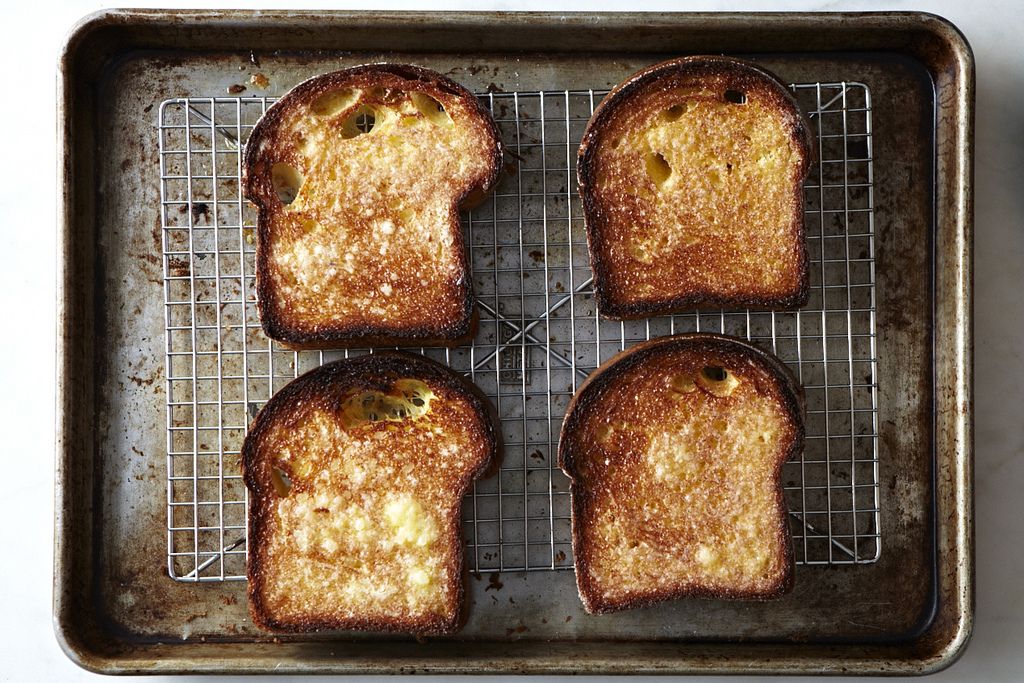

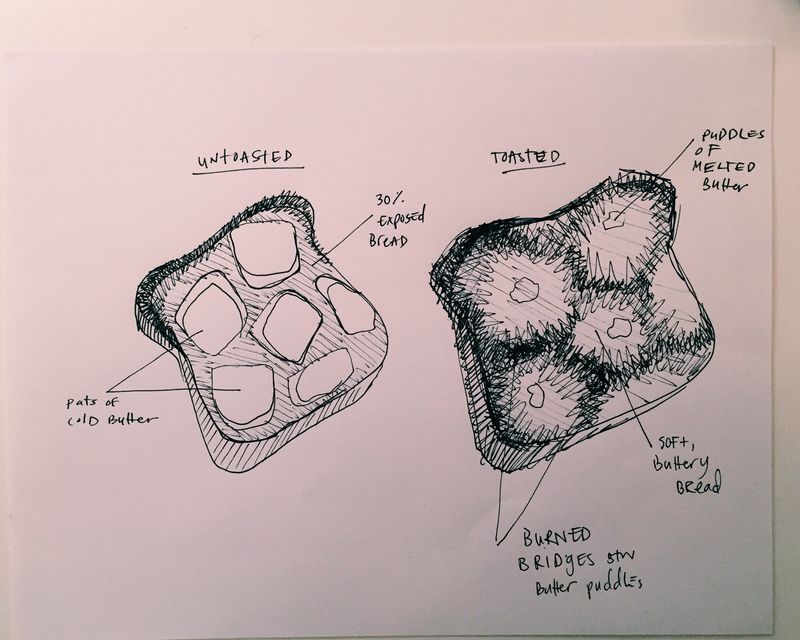

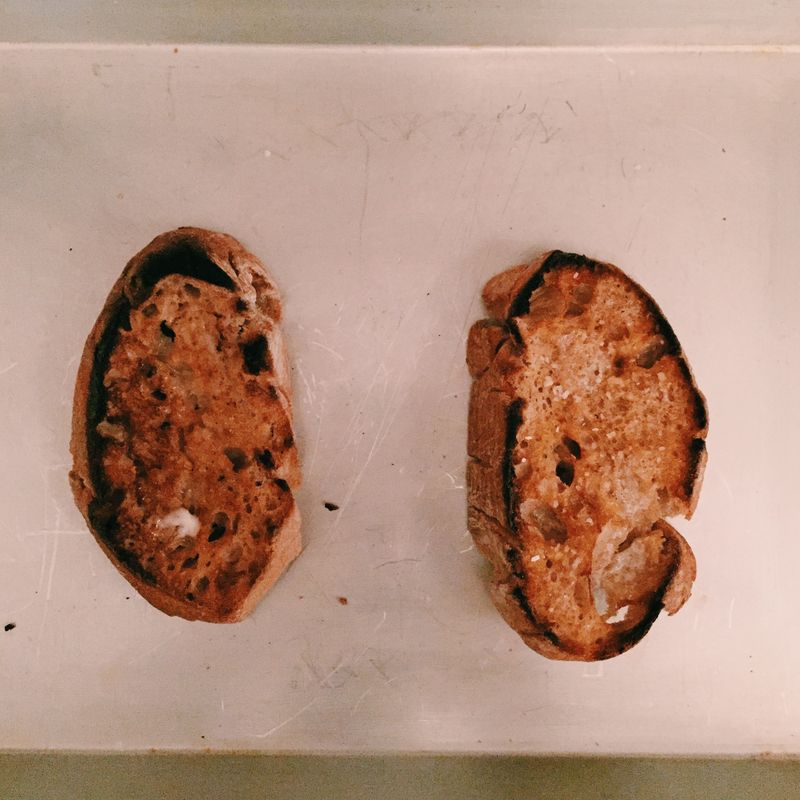
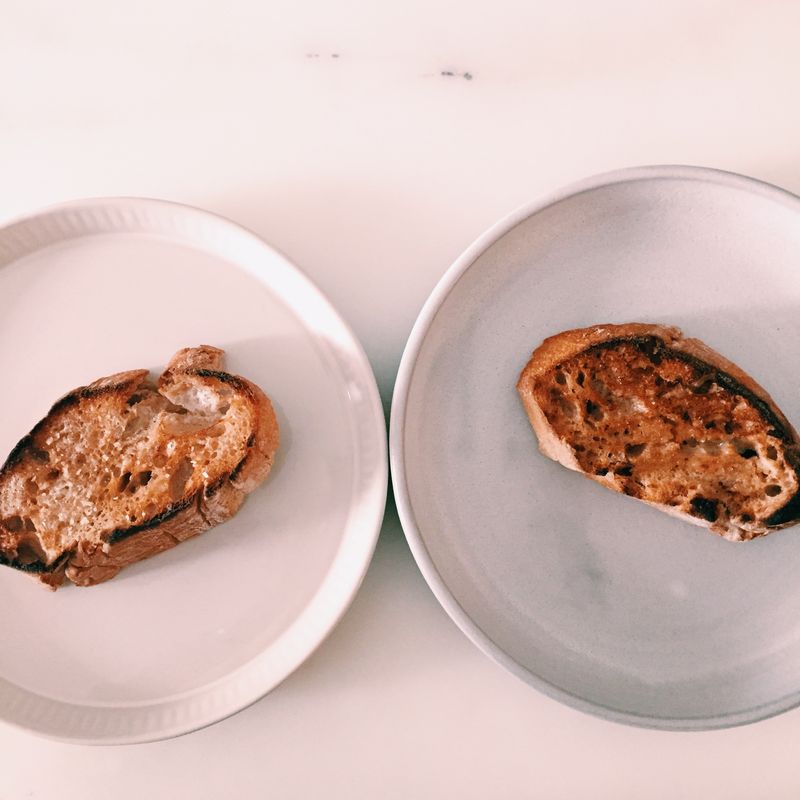
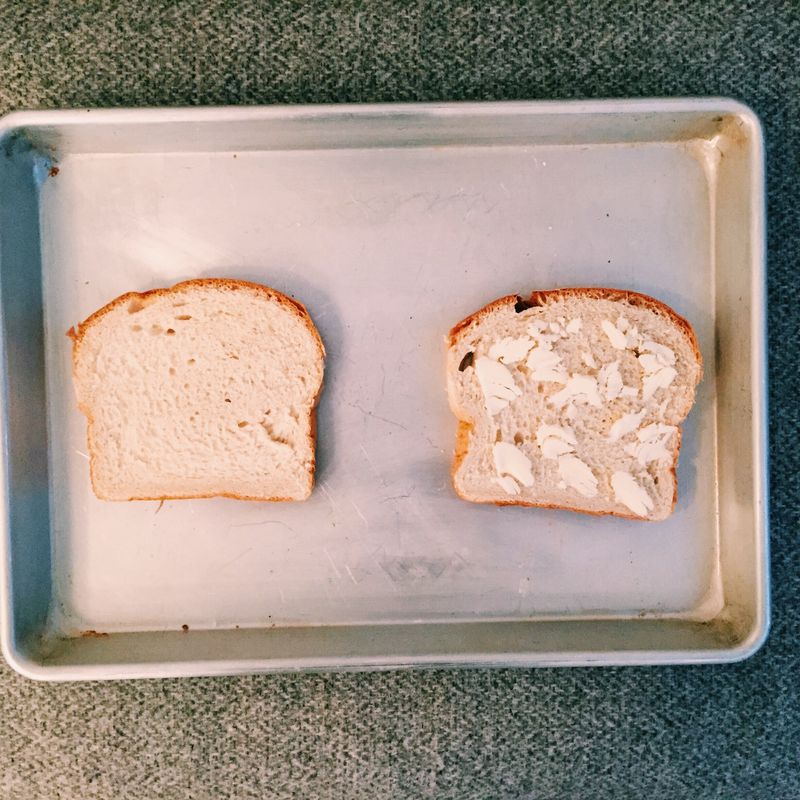
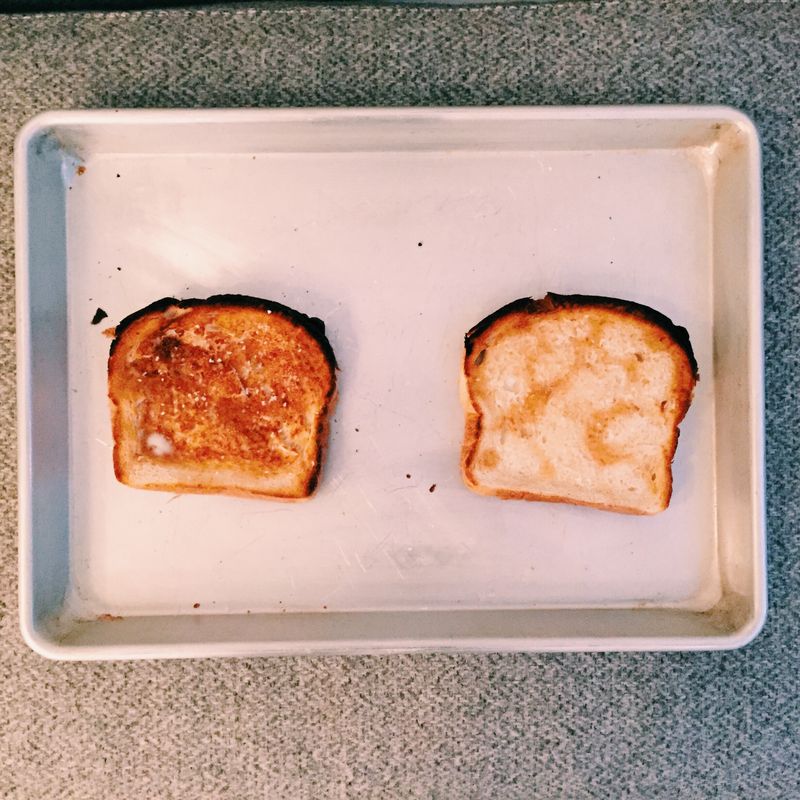
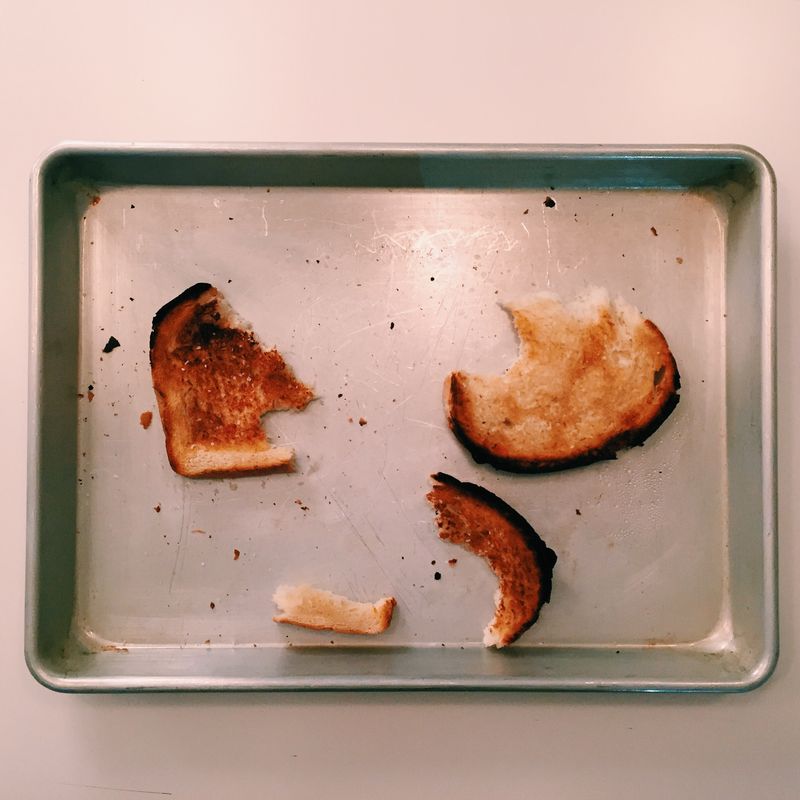

See what other Food52 readers are saying.